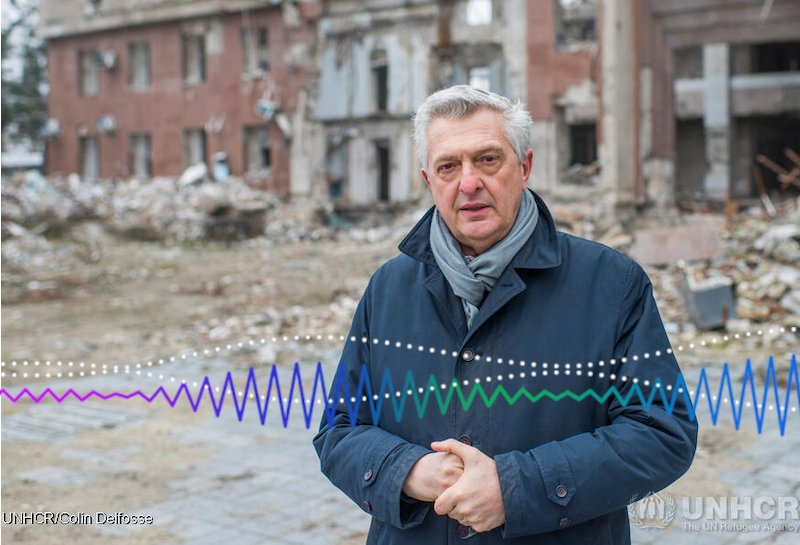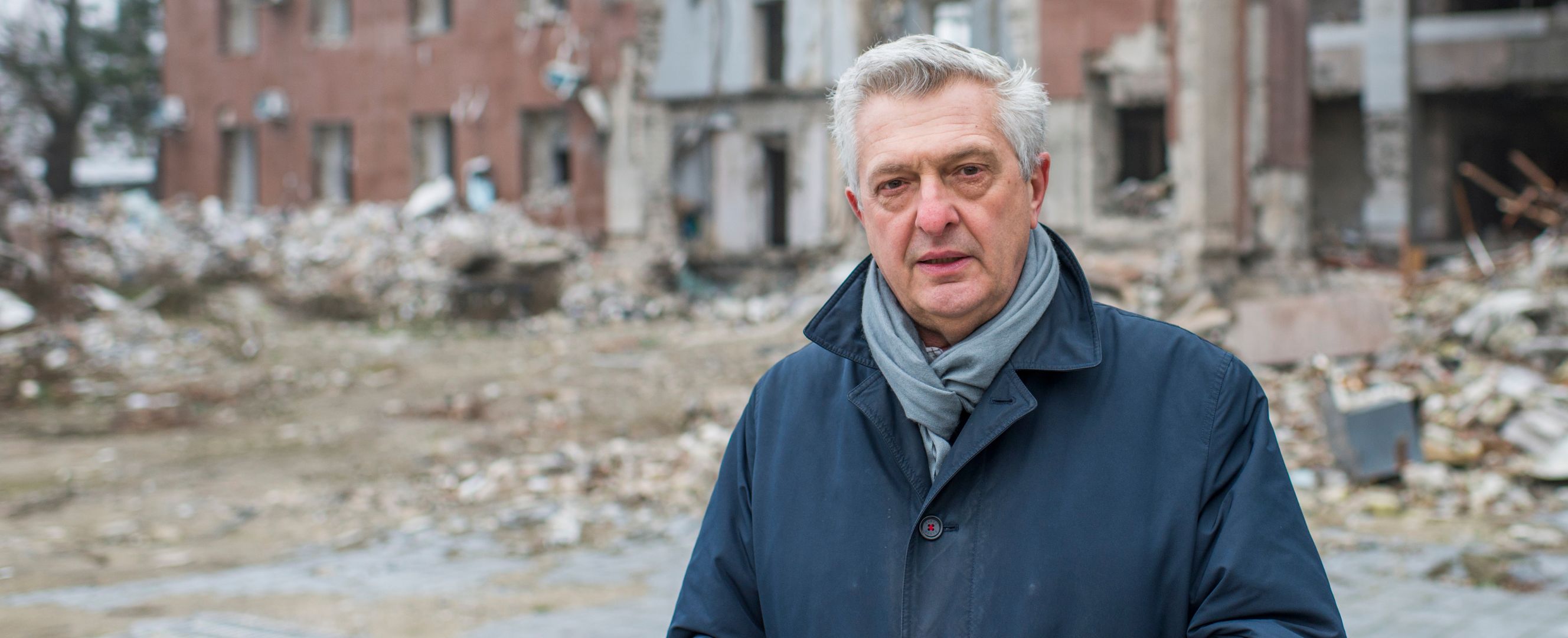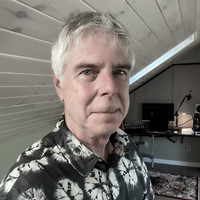UNHCR’s Filippo Grandi argues that long-term solutions for refugees go beyond humanitarian aid
Financial stability is not only about managing inflation, employment rates, and spending; it’s about understanding how those factors affect people in different places and circumstances. In an interview with F&D’s Bruce Edwards, United Nations High Commissioner for Refugees Filippo Grandi discusses how strategic partnerships between humanitarians and economists can support the millions of forcefully displaced people and provide a firmer footing for economic recovery.
F&D: What is the state of global refugees, and how do you explain the surge that we've seen especially in the past decade?
FG: The surge is very noticeable. Ten years ago, the global population of forcibly displaced people, including refugees, was about 40 million people. It’s now 103 million and rising. I call this a failure of our contemporary world to make peace. The multiplication of conflicts is the largest driver of population displacement. Of course, this needs to be seen against the broader background of other drivers—economic factors, inequalities, demographics, and climate change. All of this conspires to make population movements increasingly complex.
My organization, UNHCR, has a specific mandate to protect and help find solutions for refugees—people fleeing violence, war, or persecution. We have been increasingly assisting internally displaced people—those fleeing within their own country, without crossing borders.
F&D: How does UNHCR decide where to focus its attention and resources on any given day?
FG: We bring our expertise where we can be most useful—not only in the typical refugee situations, like Ukraine, and protracted situations, like those of Afghan and Syrian refugees, but also where the intersection of causes generates population movements. For example, the many places in the world where climate change intersects with conflict, exacerbating existing tensions and leading to further displacement, such as in the Horn of Africa or the Sahel, parts of Central America and South Asia.
Let’s not forget that displacement itself can have a negative impact on nature. Think of deforestation or the depletion of water resources when you also have large population movements. This is where we and the IMF can be useful in helping governments develop policies to address displacement.
Our organization works in 137 countries and has a workforce of about 20,000 people. We work with many partners, including local and international NGOs, other UN agencies, and development and financial institutions. We’ve had a yearly expenditure of about $6 billion in the last couple of years, almost entirely voluntarily funded. We struggle to find those funds in a world where competition for resources is very high. Our wish is to address this increasing demand through other partnerships—not only with those that are strictly humanitarian but also development actors.
F&D: To what degree do you normally collaborate with financial institutions?
FG: It’s a growing field of cooperation. In 2018, the United Nations established two compacts, one on refugees and one on safe and orderly migration. These are two distinct issues, although often intersecting, as I said. UNHCR is the custodian of the compact on refugees, which serves as a toolbox for states, in particular, to address the refugee phenomenon. It proposes that, going forward, especially in large refugee situations, the best responses are not simply humanitarian. You will always need food, medicine, shelter, and immediate care for people that are fleeing in large numbers. But very soon you will have to think about medium- and longer-term needs—for example, education, proper health care, livelihoods. Humanitarian assistance is not particularly tailored for the long term, hence, our drive to partner with development organizations.
We have taken important steps with the World Bank. A few years ago, they established financial instruments within their International Development Association platform for low-income countries and, separately, for middle-income countries to help them host large numbers of refugees. The purpose is for us to work in parallel with the World Bank to address, for example, issues of inclusion of refugees in education and health systems and the improvement of livelihoods, economic opportunities, and overall support to the communities hosting refugees.
We also work with bilateral development agencies and other regional banks. The IMF is different, of course, because of its nature. But it’s growing as an important interlocutor in this effort. To this end, we have a staff member on loan to advise the IMF on issues related to forced displacement in their work.
F&D: How vulnerable are UNHCR’s operations to global economic trends, such as high inflation?
FG: Three factors make us vulnerable. First, inflation means higher costs. From the security logistical point of view, we run very expensive operations in places like Afghanistan and northwest Syria. The second factor is that, although humanitarian aid has been growing globally, it hasn’t matched the growth of needs.
The third and most important factor is that, with greater economic pressures and risks, displaced populations—the people we work for—and host communities become more fragile and need more help. In many countries, the high number of refugees has a macroeconomic impact. We would like the IMF to factor this in its work in refugee host countries and to help us make the case that integrating refugees brings large economic benefits to their economies and societies.
F&D: How do you work in countries where the environment is extremely difficult?
FG: We assist vulnerable people, who are sometimes in extremely fragile situations. For example, in countries or territories that are controlled by entities not recognized by the international community, like Afghanistan, or in countries that are under sanctions, which makes our work more complex.
The point we make to our stakeholders and donors is that we must be there. We’re not there to recognize or endorse any government or institution. We're there to help the people, and that means dealing with all entities and governments, irrespective of the international politics. Sometimes it’s difficult to even get financial resources on the ground, but there are arrangements that make it possible. In Afghanistan, for example, appropriate exemptions to the sanctions allowed us to receive sufficient resources to run humanitarian operations that are indispensable to the survival of millions of people.
F&D: You've worked in some of the most difficult places in the world. How did you come to be in this position?
FG: I’ve been doing this work for almost 40 years. I was very young when I started as a volunteer in Thailand. It was still the Cold War, and Thailand was a Cold War frontier, so there were refugees from Indochinese countries. I worked as a volunteer for an NGO, and that was the beginning of it all. I would not say by chance. I always had a desire to do international work and to do something useful for people; some intention and some luck brought those two personal paths together.
This interview, based on a podcast from March 23, 2023, has been edited for length and clarity.
Podcast

Financial stability is not only about managing inflation, employment rates and spending, it’s about understanding how those factors affect people in different places and in all kinds of circumstances.
Opinions expressed in articles and other materials are those of the authors; they do not necessarily reflect IMF policy.









